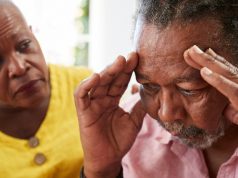Participants in the ‘Prevent 2nd Stroke’ program reported better health-related quality of life at six months
WEDNESDAY, April 20, 2022 (HealthDay News) — The online “Prevent 2nd Stroke” (P2S) behavior change intervention improves stroke survivors’ self-reported global ratings of health-related quality of life (HRQoL) at six months, according to a study published online April 19 in PLOS Medicine.
Ashleigh Guillaumier, Ph.D., from University of Newcastle in Australia, and colleagues surveyed stroke survivors (average age, 66 years; 65 percent male) at baseline (399 patients) and six-month follow-up (356 patients) following randomization to a 12-week intervention: online-only P2S program (199 patients) or a control group provided a list of internet addresses of generic health websites (200 patients).
The researchers found that at six months, the difference between the groups in the EuroQol Visual Analogue Scale HRQoL score was significantly higher in the intervention group versus the control group. In the intervention group, significantly more people reported no problems with personal care (odds ratio, 2.17) and usual activities (odds ratio, 1.66) than in the control group. There were no significant differences noted between groups on all other secondary outcomes, including diet quality, physical activity, alcohol consumption, smoking status, mood, physical functioning, and independent living.
“Online platforms represent a promising tool to engage and support some stroke survivors,” the authors write. “Future studies should test program adaptations particularly for those with greater stroke-related disability.”
Copyright © 2022 HealthDay. All rights reserved.








